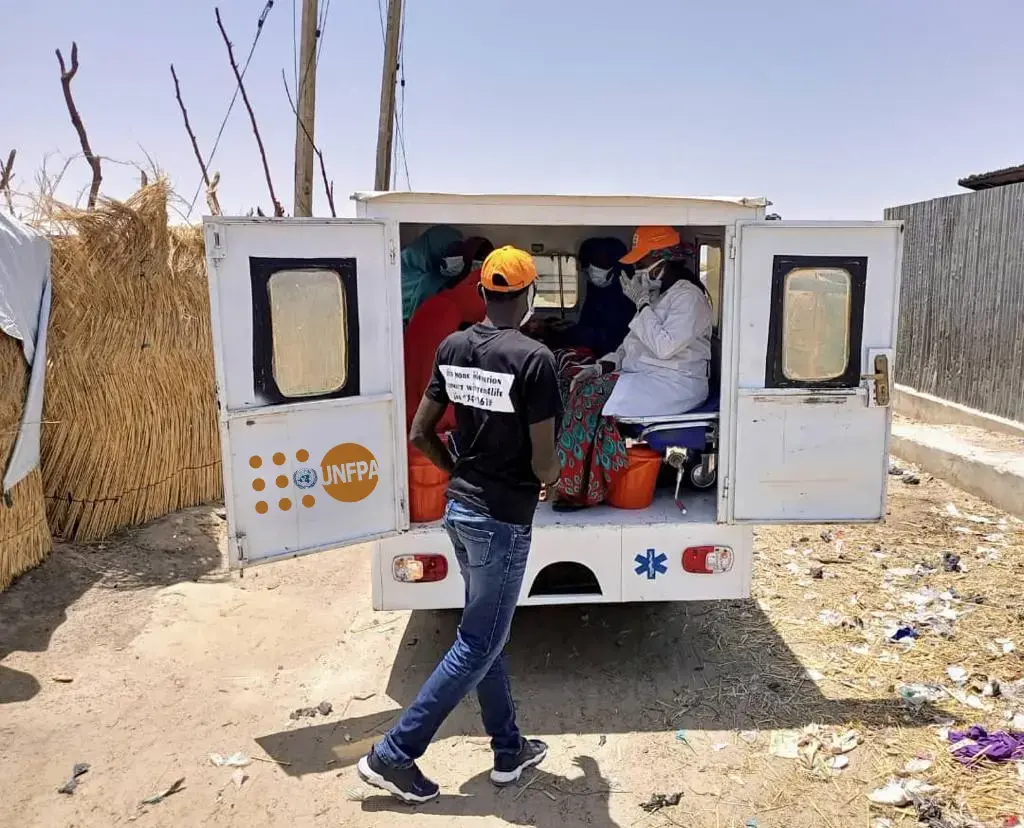Twelve years into North-east Nigeria's large-scale humanitarian crisis, the needs are as severe and large-scale as ever. The situation is not normalized, and affected people are not stabilized. They still live with great unpredictability, privation that goes far beyond background poverty, and daily threats to their health and safety, many of which could prove fatal or indict irrecoverable harm.
In 2022, the estimation of required humanitarian assistance is some 8.4 million people in the three most affected states of Borno, Adamawa and Yobe (BAY) in Northeast Nigeria. Compared to a year ago - 8.7 million, this represents a slight 4% decline in people in need (PIN) of humanitarian assistance. Some 6.7 million representing 80% of the total PIN, are women and children.
Within these population groups, some of the vulnerable people with special needs include people with disabilities, older people, pregnant and lactating women and children with high levels of malnutrition, women and girls at risk who, in some cases, face a triple burden of finding ways to survive, care for their family and protect themselves from sexual violence. There are 3.9 million people, while 2.2 million are IDPs, 1.5 million are returnees, and 1.02 million live in inaccessible areas.
Borno concentrated 81% of the total displaced people. Out of the 61 Local Government Areas (LGAs) assessed, needs in 22 LGAs are classified as 'extreme' on the severity scale, while another 19 LGAs have 'severe' needs. While 18 LGAs are at 'stressed' level, the remaining two have 'minimal' severity of needs.
According to the Humanitarian Needs Overview (HNO) for 2022, an estimated 1.4 million individuals (46% IDPs, 23% returnees, 31% host communities) will require GBV prevention and response services in the BAY states in 2022.
The crisis is taking a disproportionate and heavy toll on women and girls (82%), who are the majority. Most of those in need are in Borno State (63%), with 22% in Adamawa and 15% in Yobe. Though the HNO covers only the BAY states, similar trends could be projected in the other crisis regions (South-East, South-South, North-West and North-Central) in Nigeria, considering the crises always expose more women and girls to protection risks.
The humanitarian crisis has only worsened the pre-existing severe reproductive health and GBV situations in this part of the country. The 2018 Nigeria Demographic and Health Survey (NDHS) reports the highest rate of sexual violence in the North East of 16%, compared to 10% or less in other regions. Data from the 2018 NDHS also shows that the North East has a high unmet need for contraceptives at 17% and an extremely low contraceptive prevalence rate of 2% compared with the 10% national average - which translates into a high total fertility rate of 6.3 as compared to the national average of 5.5. The Region also has a very high Maternal Mortality Rate of 1,546 per 100,000 live births as compared to the national value of 546 per 100,000 births.
Teenage pregnancy is also high at 32%, a major health concern because of its association with higher morbidity and mortality for both the mother and the child.
The crisis with the health system disruption has further aggravated the situation. Only 22% of deliveries are assisted by a skilled birth attendant, exposing women and newborns to increased risk of death and complications.
UNFPA's Response
UNFPA is on the ground across the three affected states of the North Eastern part of Nigeria, working with governments and partners to prioritize the scale-up of essential and life-saving maternal health and protection services for vulnerable women and girls.
- Mobile mini keke ambulances and integrated health facilities, staffed by midwives and other skilled personnel, including volunteers, are set up to provide reproductive health services to women and girls in affected communities.
- Referral systems and human resources are strengthened by working closely with the government and other partners to ensure pregnant women experiencing complications can access emergency obstetric care.
- Established women and girls' safe spaces, shelters, and one-stop centres to enable women and girls, including survivors of gender-based violence access holistic services.
- Reproductive health kits and supplies are distributed to health facilities and hospitals at all levels to strengthen the provision of reproductive health care.
- Dignity kits, clean delivery kits and other basic hygiene items, pads, distributed to vulnerable women and girls.
- Coordination: UNFPA is leading and co-leading the sexual and reproductive health sub-working group meeting and clinical management of the rape taskforce, together with the Ministry of Health, for the effective coordination and support to the partners to ensure quality service provision to the people in need.
- Capacity Building: UNFPA supports strengthening the capacities of the government and other critical actors and systems for preparedness, early action and the provision of timely, integrated, key life-saving GBV and SRH interventions in emergencies. These include topics ranging from; Protection Mainstreaming, Mental Health and psychosocial support GBV Case Management, Access to Justice and Security Institutions, Clinical Management of Rape, Minimum Initial Service Package for Reproductive Health, Emergency Obstetric and Newborn Care, Data Management and Analytics, etc.
For more information, visit the Nigeria emergency dashboard.


